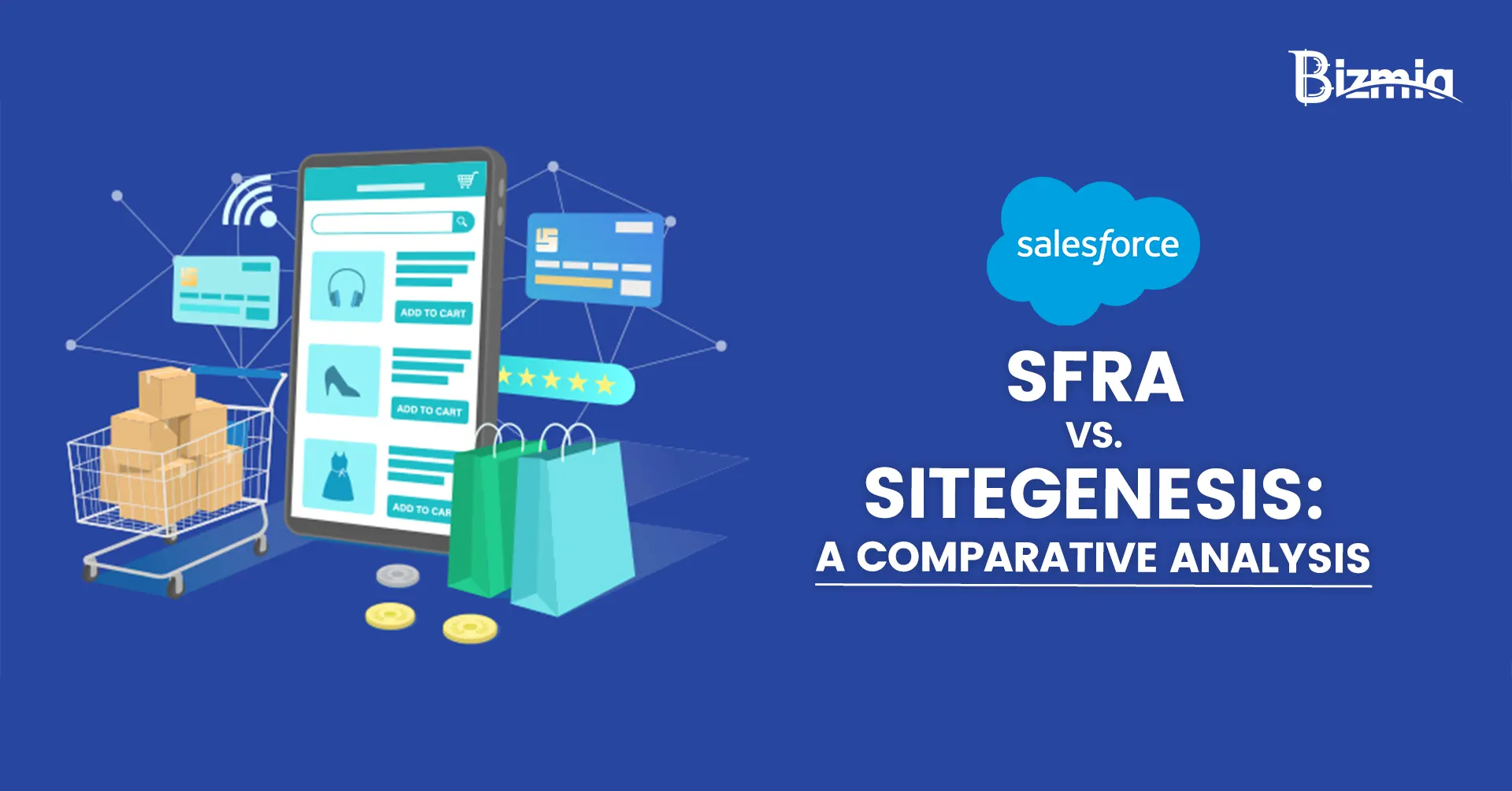Selecting the right eCommerce platform is a crucial aspect of any online business strategy. Salesforce Commerce Cloud (SFCC) is a leading platform that businesses worldwide rely on for their eCommerce solutions. Within SFCC, two architectures have garnered attention: Salesforce Storefront Reference Architecture (SFRA) and SiteGenesis. Insights in this article delves into a comparative analysis of these two architectures, aiding you in determining which could be the best fit for your eCommerce venture.
Table of Contents
Understanding SFRA and SiteGenesis
Before diving into the comparative analysis, let’s quickly understand what SFRA and SiteGenesis are:
SiteGenesis: This is SFCC’s legacy architecture. SiteGenesis was an industry standard for many years and has powered numerous eCommerce websites. It focuses on delivering a comprehensive, out-of-the-box solution for online businesses.
Salesforce Storefront Reference Architecture (SFRA): SFRA is Salesforce’s latest eCommerce architecture. It emphasizes flexibility, promoting quicker adaptations to changing market trends. Built on a modular structure, SFRA encourages best practices for site design and boosts site performance.
Understand how Salesforce development experts can guide you in choosing the right architecture for your business.
Design Flexibility and Modular Structure: SFRA’s Strength
SFRA boasts a modular structure and promotes a mobile-first approach, ensuring a responsive and adaptive site design. Its layout is easy to customize, providing businesses with greater flexibility to cater to their specific needs. On the other hand, SiteGenesis lacks this level of adaptability. While it delivers a robust out-of-the-box solution, it may not cater as efficiently to unique business requirements.
Performance: The SFRA Advantage
In an era where site loading speed can make or break an online business, performance is paramount. SFRA is designed to maximize site performance and deliver an improved customer experience. SiteGenesis, despite being reliable, cannot match the improved performance capabilities of SFRA.
Ease of Upgrades: SFRA wins
SFRA makes upgrades smoother and less disruptive, courtesy of its modular structure. Each module or feature can be upgraded separately, mitigating the risk of complete site disruption. Conversely, SiteGenesis’s monolithic structure can make upgrades a challenging and time-consuming task.
SEO: A Draw
Both SFRA and SiteGenesis offer effective Search Engine Optimization (SEO) capabilities. They provide robust tools to help businesses enhance their visibility on search engines. However, SFRA’s mobile-first approach might offer a slight edge due to Google’s mobile-first indexing.
Development and Maintenance: SFRA Is More Modern
When it comes to development, SFRA uses a modern, developer-friendly tech stack and promotes a test-driven development approach. This approach makes the development process more efficient and reduces the risk of errors. Additionally, SFRA’s modular structure simplifies site maintenance, enabling developers to address issues in individual modules without disrupting the entire site. In contrast, SiteGenesis uses a less contemporary tech stack, and its monolithic structure can make maintenance more challenging.
Support and Community: Equal Today, but the Future Belongs to SFRA
Both SFRA and SiteGenesis come with comprehensive documentation and a lively developer community. These resources offer invaluable assistance when developers run into challenges or need guidance for advanced configurations. Salesforce provides robust support for both architectures, but SFRA is anticipated to be the primary recipient of future enhancements and updates. Therefore, organizations considering the long-term view may see additional value in choosing SFRA, given its likely trajectory of continuous improvement and enrichment.
Integration Capabilities: SFRA Outperforms SiteGenesis
SFRA and SiteGenesis both support third-party integrations, but their experiences vary. SFRA’s flexible design allows easy integrations, enhancing online stores and customer experiences. However, SiteGenesis, while competent, can have complex integration processes due to its legacy framework, lacking SFRA’s flexibility. Therefore, SFRA outperforms SiteGenesis in integration capabilities.
The Verdict
While SiteGenesis has been a reliable choice for many businesses over the years, SFRA is undoubtedly the future of SFCC. Its enhanced flexibility, performance capabilities, easier upgrade process, modern development practices, and simpler maintenance make it a more future-proof choice for businesses seeking to excel in the rapidly evolving eCommerce landscape.
The right eCommerce architecture can significantly impact your online store’s success. The choice between SFRA and SiteGenesis should be driven by your specific requirements, resources, and long-term eCommerce strategy. Therefore, conduct a thorough analysis, consider your business needs, and choose wisely.
At Bizmia, we understand that every business has unique needs. If you need help deciding, we can provide you with personalized advice based on your business model and goals. To discover which eCommerce architecture is the best fit for your unique business objectives, feel free to contact a Bizmia Salesforce experts today.












